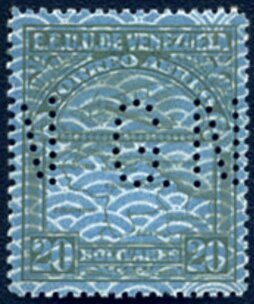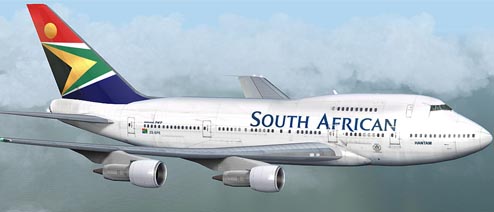Stamp: Map of Venezuela, Second Series (Venezuela 1932)
Map of Venezuela, Second Series (Venezuela 1932)
01 January (Venezuela ) within release Official - Map of Venezuela, Second Series goes into circulation Stamp Map of Venezuela, Second Series face value 20 Venezuelan bolívar
| Stamp Map of Venezuela, Second Series in catalogues | |
|---|---|
| Michel: | Mi: VE D113 |
| Stamp Number: | Sn: VE OAC40 |
Stamp is square format.
Perfin G.NAlso in the issue Official - Map of Venezuela, Second Series:
- Stamp - Map of Venezuela, Second Series face value 1;
- Stamp - Map of Venezuela, Second Series face value 1.20;
- Stamp - Map of Venezuela, Second Series face value 1.70;
- Stamp - Map of Venezuela, Second Series face value 1.80;
- Stamp - Map of Venezuela, Second Series face value 1.90;
- Stamp - Map of Venezuela, Second Series face value 1.95;
- Stamp - Map of Venezuela, Second Series face value 2;
- Stamp - Map of Venezuela, Second Series face value 2.10;
- Stamp - Map of Venezuela, Second Series face value 2.30;
- Stamp - Map of Venezuela, Second Series face value 2.50;
- Stamp - Map of Venezuela, Second Series face value 3;
- Stamp - Map of Venezuela, Second Series face value 3.70;
- Stamp - Map of Venezuela, Second Series face value 4;
- Stamp - Map of Venezuela, Second Series face value 5;
- Stamp - Map of Venezuela, Second Series face value 8;
- Stamp - Map of Venezuela, Second Series face value 10;
- Stamp - Map of Venezuela, Second Series face value 20;
- Stamp - Map of Venezuela, Second Series face value 5;
- Stamp - Map of Venezuela, Second Series face value 10;
- Stamp - Map of Venezuela, Second Series face value 15;
- Stamp - Map of Venezuela, Second Series face value 25;
- Stamp - Map of Venezuela, Second Series face value 40;
- Stamp - Map of Venezuela, Second Series face value 70;
- Stamp - Map of Venezuela, Second Series face value 75;
Stamp Map of Venezuela, Second Series it reflects the thematic directions:
An aircraft (pl. aircraft) is a vehicle that is able to fly by gaining support from the air. It counters the force of gravity by using either static lift or the dynamic lift of an airfoil, or, in a few cases, direct downward thrust from its engines. Common examples of aircraft include airplanes, rotorcraft (including helicopters), airships (including blimps), gliders, paramotors, and hot air balloons.Part 1 (Definitions and Abbreviations) of Subchapter A of Chapter I of Title 14 of the U. S. Code of Federal Regulations states that aircraft "means a device that is used or intended to be used for flight in the air."
An airline is a company that provides a regular service of air transportion for passengers or freight (cargo). Airlines use aircraft to supply these services. Many passenger airlines also carry cargo in the belly of their aircraft, while dedicated cargo airlines focus solely on freight transport. Generally, airline companies are recognized with an air operating certificate or license issued by a governmental aviation body. Airlines may be scheduled or charter operators.
Aviation is the practical aspect or art of aeronautics, being the design, development, production, operation and use of aircraft, especially heavier than air aircraft. The word aviation was coined by French writer and former naval officer Gabriel La Landelle in 1863, from the verb avier (synonymous flying), itself derived from the Latin word avis ("bird") and the suffix -ation.
A map is a symbolic depiction emphasizing relationships between elements of some space, such as objects, regions, or themes. Many maps are static, fixed to paper or some other durable medium, while others are dynamic or interactive. Although most commonly used to depict geography, maps may represent any space, real or imagined, without regard to context or scale, such as in brain mapping, DNA mapping, or computer network topology mapping. The space being mapped may be two dimensional, such as the surface of the earth, three dimensional, such as the interior of the earth, or even more abstract spaces of any dimension, such as arise in modeling phenomena having many independent variables. Although the earliest maps known are of the heavens, geographic maps of territory have a very long tradition and exist from ancient times. The word "map" comes from the medieval Latin Mappa mundi, wherein mappa meant napkin or cloth and mundi the world. Thus, "map" became the shortened term referring to a two-dimensional representation of the surface of the world.




